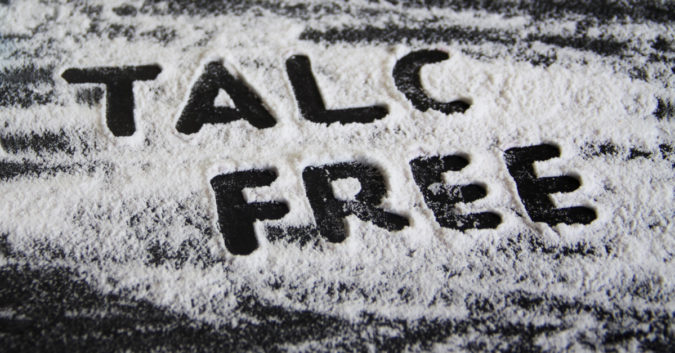Public outcry, coupled with nearly 20,000 talcum powder lawsuits, has prompted major cosmetics manufacturers to move away from talc — a key ingredient in many of their longstanding products.
The worry, of course, is that talc can be contaminated by asbestos — a toxic mineral that is known to cause mesothelioma, lung cancer, and other deadly diseases. Cosmetic talc is applied on sensitive areas of the body, increasing one’s chances of asbestos exposure and developing disease.
There is no cure for mesothelioma, and the risk of developing cancer after exposure is lifelong.
Reuters reported that Chanel, Revlon, and L’Oreal, among others, have taken steps to remove talc from body powders, eyeshadows, and other cosmetics. The news comes on the heels of Johnson & Johnson’s landmark decision to end sales of talc-based baby powder in North America.
According to public filings and information disclosed during talcum powder lawsuits, the Reuters team found that:
- Avon declined to comment, but securities filings show the company faces 128 lawsuits over their talc-based products.
- Beiersdorf, the German company that manufactures Nivia baby powder, switched to cornstarch instead of talc in 2018.
- Bausch Health said they switched the formula for Shower to Shower, formerly a talc-based product sold by Johnson & Johnson, in 2018.
- Chanel has removed talc from loose face powder and, as of 2017, has stopped making talc-based body powder scented with its famous No. 5 fragrance. The company continues to use talc in pressed powder, blush, and eyeshadow.
- L’Oreal is exploring alternatives to talc, though it has not found a suitable substitute so far. The company continues to source talc and requires that suppliers certify the raw material is asbestos-free.
- Revlon has removed talc from its body products, but a spokesman did not tell Reuters when the products were pulled or why.
- Sanofi said that it stands by the safety of its talc-based Gold Bond powder and will defend itself against associated lawsuits.
The majority of companies who pulled their talc-based products cited “consumer preferences” and “market perceptions,” rather than safety concerns.
While the shift away from cosmetic talc is certainly welcome, the effort by manufacturers to paint this as a public-relations issue is dangerous and short-sighted.
The health risks associated with talc are rooted in science — not in the fads of consumer taste.
The Real Reason Manufacturers Are Pulling Talc-Based Products
Anxiety about the dangers of talcum powder cancer dates back to the 1970s when scientists first discovered a possible connection between the mineral and ovarian tumors.
Early researchers wondered: Were the ovarian tumors caused by talc itself or asbestos contamination in the talc?
Long suppressed by manufacturers, the dangers of asbestos were finally being publicized at that time, and it was well-established by geologists that the toxic mineral was already present in thousands of underground deposits of talc.
In 1971, the U.S. Food and Drug Administration (FDA) convened health experts and industry leaders to come up with standards for talc safety that would protect consumers. By and large, Richard Nixon’s FDA deferred to the cosmetic industry lobbying group to write the regulations.
Bankrolled by cosmetic manufacturers, the lobbyists told the FDA that companies could successfully screen talc for asbestos themselves and ensure that their products were pure.
What the FDA didn’t know was that Johnson & Johnson, one of the key American manufacturers involved in setting U.S. safety guidelines, had already discovered asbestos several times in its talc mines.
According to a scathing 2018 Reuters investigation, Johnson & Johnson knew asbestos was a problem in their mainline product, Johnson’s® Baby Powder. Privately, the company worried that its talc could never be 100% free of asbestos, but they never shared such concerns with regulators or consumers who purchased and used their products.
Instead, Johnson & Johnson succeeded in establishing the country’s talc-testing regulations — testing methods that were far too weak to detect the presence of asbestos. Since then, for nearly 50 years, manufacturers in the talc industry have been able to use these less-accurate tests in order to sell tainted talc to countless Americans.
Asbestos Continues to Be Detected in ‘Safe’ Talc Products
Since the 2018 Reuters investigation that revealed Johnson & Johnson had lied about the existence of asbestos in its talc, companies that use the mineral in cosmetic products have been under increased scrutiny.
Upon closer inspection, the myth of “asbestos-free talc” has started to crumble.
The toxic mineral has since been detected in a range of consumer talc products, including children’s makeup from Claire’s and Justice, eyeshadow available on Amazon, and crayons and drawing kits sold at local Dollar Tree stores.
Such findings have pushed the FDA to update federal asbestos-in-talc guidelines for the first time in half a century.
Public health groups hope that new standards will lead to fewer cases of talcum powder cancer, but decades of damage have already been done.
Filing a Talcum Powder Lawsuit
For generations, companies like Johnson & Johnson have known about the risks of asbestos exposure associated with their talc-based products. Consumers, on the other hand, were left in the dark while cosmetic manufacturers profited from the sale of products they knew could be dangerous.
If you used talc-based products and have been diagnosed with mesothelioma or another cancer, you may be eligible to file a talcum powder lawsuit.
Talcum powder lawsuits can provide a roadmap to justice and compensation. Compensation secured in a verdict or settlement can go a long way in helping families needlessly affected by diseases associated with asbestos exposure.
Speak with one of our advocates today for a free legal case review — learn how you can fight back.
